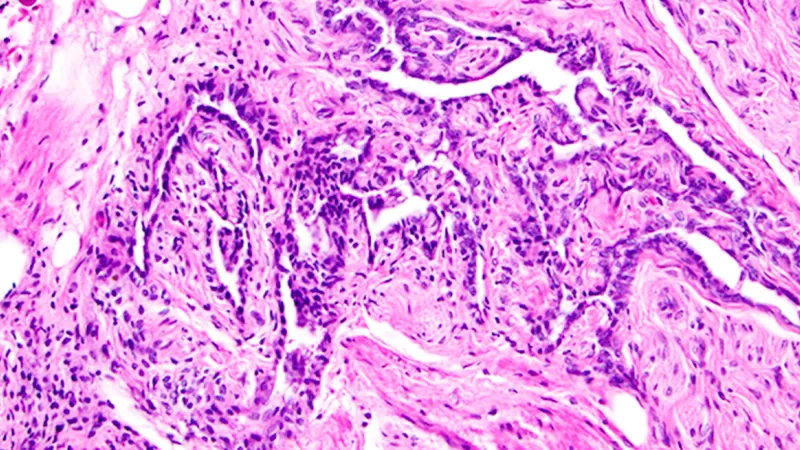
Groundbreaking Discovery: 'Useless' Female Organ Found to Be Vital for Fertility
2025-04-17
Author: Ting
A Hidden Marvel Unveiled
Imagine a seemingly insignificant part of the female anatomy that science has long dismissed as irrelevant. However, new research reveals that this overlooked structure, the rete ovarii, may be crucial for ovarian health and fertility.
From Vestige to Vital
For over a century, the rete ovarii (RO) has been labeled a vestigial structure—an evolutionary remnant with no significant purpose in adults. Found in various mammals, including humans, this horseshoe-shaped network of tubes sits beneath the ovary, where blood vessels and nerves intertwine. But findings published in the journal eLife on March 19 challenge this long-held belief.
A New Role for a Long-Misunderstood Organ
Researchers have now demonstrated that the RO contains three distinct regions, each reacting to hormonal signals—raising questions about its role in female reproductive health. This discovery is especially compelling since both humans and mice share similar developmental pathways for sex organs, suggesting that these findings may also apply to human biology.
Revelations from Modern Science
Adam Taylor, a professor at Lancaster University and an observer of the study, points out that past scientists lacked the advanced imaging techniques available today to investigate the RO's function. Recent studies utilizing living mice and various modern techniques have shed light on this structure's potential importance.
The Secrets of the Rete Ovarii
The study discovered that the rete ovarii develops distinct regions during fetal growth and remains significant in adulthood. Researchers identified proteins, such as insulin-like growth factor-binding protein 2 (IGFBP2), which could be instrumental in ovarian functioning, flourishing in the extraovarian rete (EOR) at birth. Additionally, the study utilized fluorescent dye to track fluid movement within the EOR, hinting that it may support ovarian function.
Decoding Endocrine Signals
The RO is not only a passive structure; it actively engages with ovarian hormones. Cells within the RO express numerous hormone receptor genes crucial for female reproduction, suggesting that it may regulate ovarian health and function. Taylor posits that the rete ovarii might act as a hormonal antenna, interpreting signals from the body and influencing ovarian activity.
A Call for Further Exploration
Lead author Dilara Anbarci, a developmental biologist at the University of Michigan, emphasizes the vast mysteries still surrounding female anatomy. This study inspires further research into the dynamics of the rete ovarii—a step towards understanding and potentially treating reproductive health issues.
The Road Ahead for Women's Health
As this foundational research unfolds, it may pave the way for new therapeutic avenues in gynecological health. Greater insight into structures like the rete ovarii could revolutionize our understanding of female reproductive conditions and lead to groundbreaking treatments.



 Brasil (PT)
Brasil (PT)
 Canada (EN)
Canada (EN)
 Chile (ES)
Chile (ES)
 Česko (CS)
Česko (CS)
 대한민국 (KO)
대한민국 (KO)
 España (ES)
España (ES)
 France (FR)
France (FR)
 Hong Kong (EN)
Hong Kong (EN)
 Italia (IT)
Italia (IT)
 日本 (JA)
日本 (JA)
 Magyarország (HU)
Magyarország (HU)
 Norge (NO)
Norge (NO)
 Polska (PL)
Polska (PL)
 Schweiz (DE)
Schweiz (DE)
 Singapore (EN)
Singapore (EN)
 Sverige (SV)
Sverige (SV)
 Suomi (FI)
Suomi (FI)
 Türkiye (TR)
Türkiye (TR)
 الإمارات العربية المتحدة (AR)
الإمارات العربية المتحدة (AR)